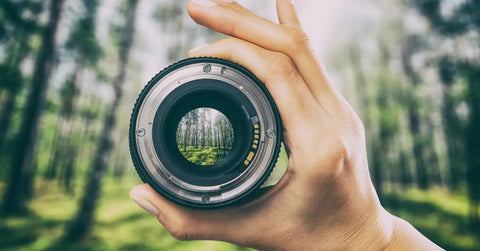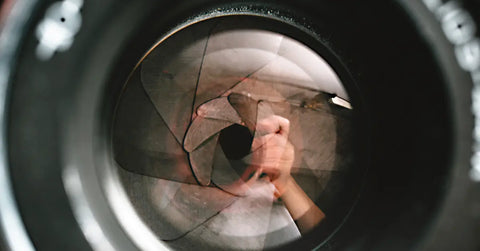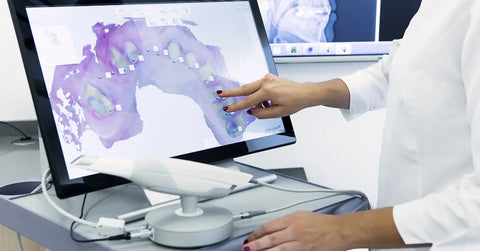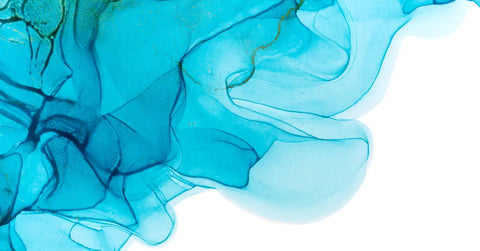You're standing in front of something so stunning it practically steals your breath—maybe it’s a sunset that paints the sky in a million shades, or a smile that seems to light up the whole room.
You've got your camera in hand because you want to do more than just remember this; you want to feel it again whenever you look at the photo. That's the magic of photography, right? It’s like a time machine and an emotional vault all in one.

This isn't just a fancy term photographers throw around—it’s your golden ticket to making your photos pop, to telling stories that stick without saying a word.
So, what’s the big deal with filling the frame? It’s about getting up close and personal, making sure your subject isn't just a part of your photo but the star of the show. It's about stripping away the extras that don’t matter, focusing on what really does, and making the viewer feel like they're right there with you. In this blog, we're going deep into how you can master this technique.
We'll share the nitty-gritty on making your shots stand out, give you the lowdown on some cool tricks and tips, and basically turn the everyday yawn-worthy shots into something utterly jaw-dropping. Ready to turn the dial up on your photography skills and make the ordinary extraordinary?
Let’s discuss it together and make every shot count, filling up that frame like a pro.
Understanding Fill the Frame in Photography

Filling the frame isn't just some fancy photography term; it's pretty much storytelling magic. Think of it like this: you're framing your shot to give your main subject all the spotlight, cramming it into the viewfinder so there's barely any room for anything else.
It's like telling your audience, "Hey, look here and nowhere else!" This trick is super effective because it lets you highlight all the cool details of your subject, making it the undeniable star of the show.
Plus, it's a great way to cut out all the unnecessary noise and clutter that could distract from your photo's main attraction. In a nutshell, filling the frame helps you make your photos not just look better, but feel more focused and impactful.
Why it Matters:
In the world of photography, everything you squeeze into that shot really counts. It's like setting up the perfect scene for a movie—every character, every prop, matters.
So when we talk about filling the frame, it’s like telling your viewers, “Hey, look right here; this is what’s important.” You’re grabbing their attention and pointing it straight at your star—the main subject.

This trick is a game-changer, especially in portraits where you want to catch every sparkle in someone's eye, or in macro photography, where the tiny details of a dewdrop on a leaf can tell a whole story.
It’s all about making sure that the emotion and the details you want to showcase take center stage, leaving no room for distractions.
Techniques for Filling the Frame
Zoom In or Move Closer
Let's talk about keeping it simple but smashing with your photography. You know, sometimes all it takes to nail that perfect shot is to cozy up a bit closer to whatever you're shooting, or just give that zoom lens a good twist. It's pretty much a game-changer.

Picture this: you zoom in or step closer, and bam, your subject's now stealing the show, front and center. And all that random, distracting stuff in the background? Gone. Just like that, you've got a cleaner shot that's all about your main star.
This approach is super straightforward, but don't let that fool you—it packs a serious punch. By zooming in or moving in, you’re not just getting closer physically; you're diving deep into what makes your subject tick. You're showing off the textures, the colors, the essence of what you're capturing.
It's like you're telling your viewers, "Hey, check this out up close. Pretty awesome, right?" And honestly, that's what photography's all about—sharing those incredible details and moments that we might otherwise miss.
Use a Longer Focal Length
Using a telephoto lens is like having a superpower when you want to fill up your photo with a subject but just can’t get close enough. Imagine trying to snap a photo of a skittish deer in the wild or a fast-moving soccer player scoring the winning goal.
You can’t exactly ask them to pause and pose, right? This is where a telephoto lens comes in clutch. It’s your secret weapon to zoom in tight on the action from a distance, making your subject appear close and personal, filling up the frame beautifully without scaring off the deer or getting knocked over by soccer players.
It’s perfect for when you’re capturing the essence of wildlife or the intensity of sports without needing to physically move closer, which is often impossible in these scenarios.
Plus, this kind of lens helps isolate your subject from a busy background, making them stand out even more. It’s all about bringing the distant world closer to you, making every detail pop right out of the photo.
Crop Strategically

You've taken a shot that's almost perfect, but there's just too much going on around your main subject. Maybe it's a stray branch, a photo bomber, or just too much empty space that doesn’t really add anything to the story you're trying to tell. That's where the magic of editing swoops in to save the day.
Think of cropping as your best bud in the editing process. It's like using a pair of virtual scissors to cut out the parts of your photo that just don’t belong.
By zooming in and framing your subject just right, you can kick the distractions to the curb and keep the spotlight on what really matters.
Cropping isn't just about slicing and dicing, though. It's about stepping back, looking at your photo, and asking, "What's the real star of the show here?" Once you figure that out, you can trim away the excess, honing in on the star and giving it the stage it deserves.
This doesn’t just tidy up your photo; it can totally change the vibe, focus, and even the story you’re telling.
So next time you're reviewing your shots and something feels off, remember that cropping is your secret weapon. It’s your chance to tweak and refine, turning a good photo into a great one by ensuring the viewer’s eyes go straight to where you want them to.
Incorporating Backgrounds Wisely

Let's get real for a moment—when we talk about filling the frame with your main squeeze (yeah, I mean your subject), don’t ghost on your background. It's like the unsung hero of your photo story.
Picking the right background is kind of like choosing the right soundtrack for your favorite movie scene; it sets the mood, adds flavor, and can seriously up your photography game without stealing the spotlight.
Now, imagine this: you’re aiming for that perfect shot, your subject is ready for their close-up, and you're all zoomed in. But here's the kicker, the background still plays a part in this visual symphony.
A background that’s too busy is like having an annoying photobomber—it distracts and detracts. What you want is something that vibes with your subject, giving them all the attention but also adding a little something-something to the overall feel.
Enter bokeh—the photography world’s version of a magic wand. It’s that dreamy, buttery smooth background that turns lights into glowing orbs and gives your photo that professional sheen. It makes your subject stand out like the lead singer in a band, with the background as the cool, supportive drummer.
And don’t even get me started on colors. A dash of contrasting color in the background? Chef’s kiss. It’s like your subject and the background are doing this elegant dance, making each other look good without stepping on each other's toes.
In short, even when you’re all about giving your subject the limelight by filling the frame, don’t sleep on your background.
A cleverly chosen backdrop is your secret weapon for adding depth, context, and a whole lot of personality to your shots. It’s all about balance, baby—finding that sweet spot where everything in your photo lives in harmony.
Transitioning Through the Lens: A Practical Example
Imagine you're wandering through a huge field, your eyes skimming over a sea of flowers. Now, picture zooming in super close on just one of those flowers.
You fill your camera’s view with its bright colors and all those cool little details you'd miss from afar.
It’s like you’re bringing the viewer right there with you, nose practically in the petals. Suddenly, that single flower isn’t just a tiny part of a bigger scene anymore. It's the star of the show, shining bright with its own story of beauty and strength.
By doing this, the photographer does something pretty awesome. They're not just taking a picture; they're creating a moment.
A moment where that flower goes from being "just another one in the field" to something special, something that can stand for beauty and toughness in the face of everything. It’s like saying, “Hey, look closer. There’s more to this than meets the eye.”
Conclusion
Filling the frame in photography is a powerful technique that, when mastered, can transform the way we perceive and interact with the world through images. It compels viewers to see the beauty, complexity, and emotion that might otherwise go unnoticed.
As we conclude, remember that photography is not just about capturing what you see; it's about conveying how you feel about what you're seeing. Whether you’re a seasoned photographer or just starting, I encourage you to experiment with filling the frame in your next photographic venture.
Now that you're equipped with the knowledge and inspiration to fill the frame, it's your turn to bring this technique into your photography practice.
Share your experiences and creations with us, and let's continue to learn and grow together in this fascinating journey of photography.
For more tips, tricks, and photography insights, keep following our website and Discord channel. Your next snapshot could be the masterpiece that speaks volumes, filling not just the frame, but also the hearts of those who gaze upon it.







1 comment
Donna McClay
Your explanation of “fill the frame” is the best I’ve ever read, heard or seen in the nearly three years since I started making photographs with professional instructors. Very slowly, I’d come to understand the essence of this concept you’ve so eloquently explained here. Thank you, so much. I will share your advice.
Your explanation of “fill the frame” is the best I’ve ever read, heard or seen in the nearly three years since I started making photographs with professional instructors. Very slowly, I’d come to understand the essence of this concept you’ve so eloquently explained here. Thank you, so much. I will share your advice.